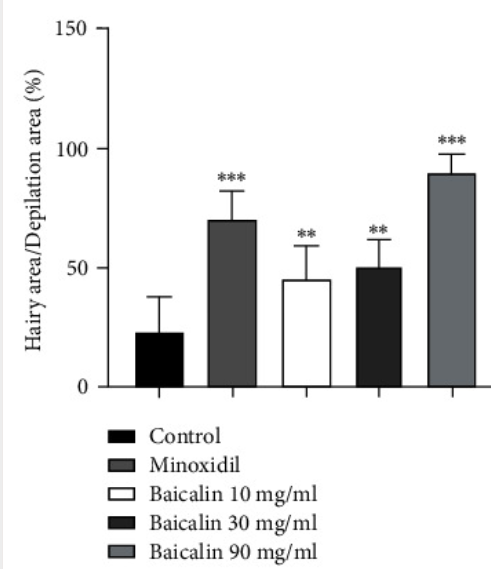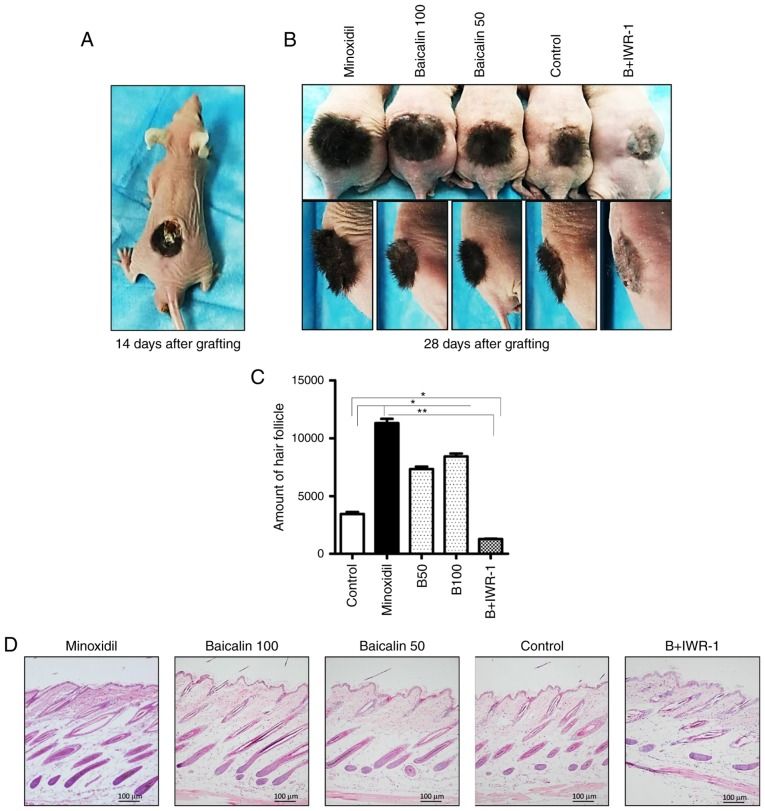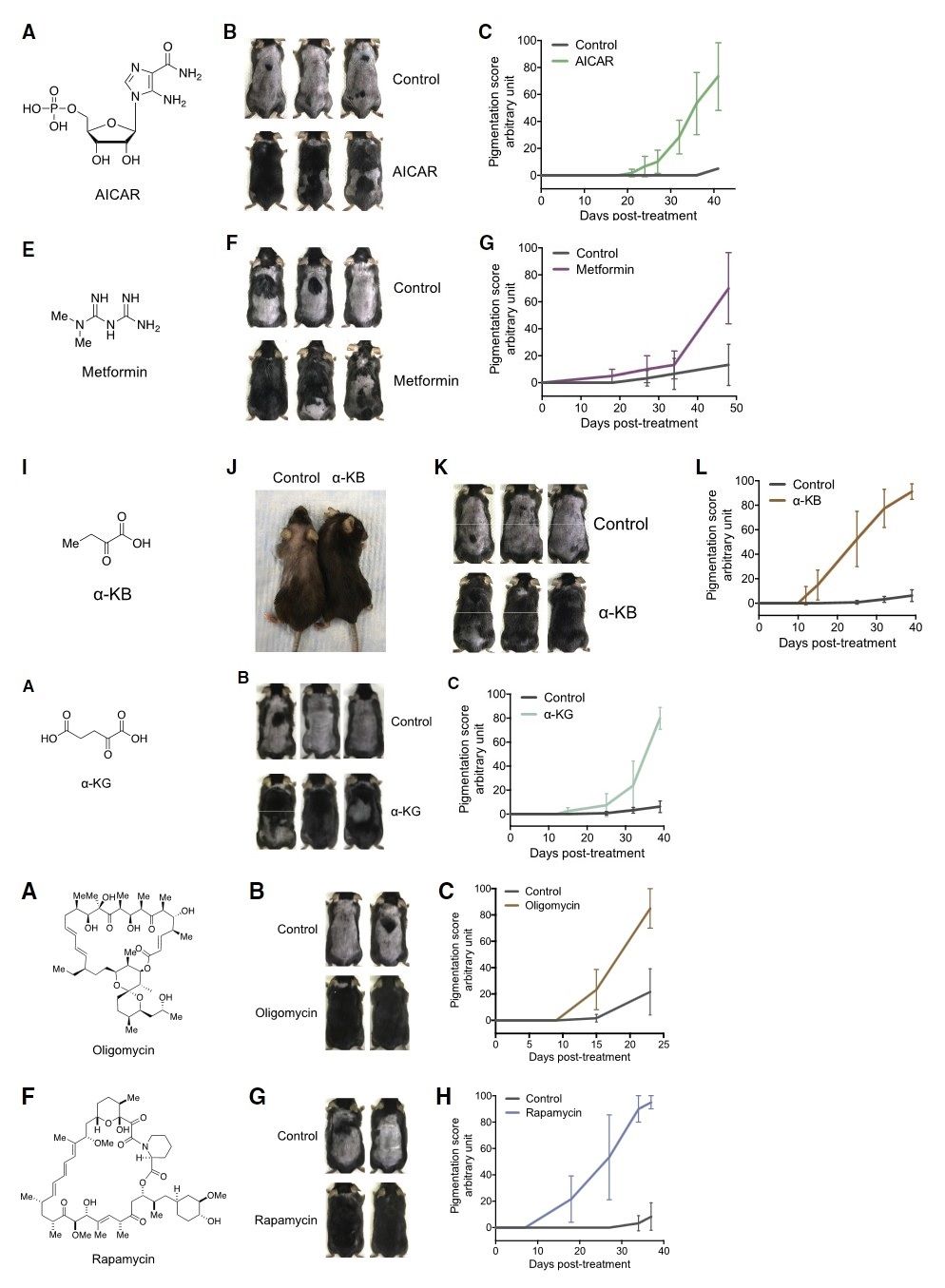Reversal of hair loss in Mice with “sugar gel”
-
@AinmBeo you might have to use proportionally more .
I just started using a new one, but it's a German product. Try to find one that has no other ingredients.
-
@Mauritio Have you actually gotten all of that to dissolve? I think I would need to prepare two separate solutions in order to get all of those ingredients to dissolve.
NMN is sill pretty expensive if you're buying stuff that's verifiably real.
The dextrose I sometimes spray onto my scalp an hour prior to showering, but I can't handle having it in my hair all day long.
But yeah, I hope you try it out.
-
@Gaston Everything but the dextrose, because I don't have it yet.
But it dissolved very easily .True the NMN is still kinda expensive comes down to 15-30€/ month if I calculated it right. But I'll try it out for a while and then decide if it's worth keeping.
I put the new formula on my scalp for 45 minutes today and my hair looked really good afterwards, as if I used a conditioner of something like that. Didn't get this effect with my previous apple polyphenol solution so it must be something from the new formula.
-
@Mauritio said in Reversal of hair loss in Mice with “sugar gel”:
Interesting. The hair follicle seems to be use mostly aerobic glycolisis for energy production.
"...the hair follicle exhibits aerobic glycolysis, in that of the total glucose utilized by the hair follicle, only 10% is oxidized to CO2."
I couldn't wrap my head around why the hair uses 90-95% aerobic glycolisis for energy , generating large amounts of lactate, even in the presence of oxygen.
From what I've read it has the following reasons:
-
Fast ATP generation: hair is one of the most rapidly dividing type of cells in the body . It constantly needs new ATP, which is generated faster by glycolisis . While OxPhos generates more ATP it takes a lot longer and ...
-
...Aerobic glycolisis leads to copious amounts of intermediate generation like lactate and pyruvate . Which can be used to build nucleotides and keratin for new hair . In OxPhos the carbon goes towards CO2.
-
The hair is a low oxygen environment similarly to tumours thus both use aerobic glycolisis (Warburg effect) l
-
-
Baicalin outperforms Minoxidil in hair growth study .

https://pmc.ncbi.nlm.nih.gov/articles/PMC9699788/#sec3
Here's another in vivo study in which it helps hair growth. Doesn't quite outperform Minoxidil, but results are still decent.

https://pubmed.ncbi.nlm.nih.gov/29336472/
Promotes anagen hair phase in mice.
https://link.springer.com/article/10.1007/s00210-014-1075-0 -
-
@Mauritio why do they mess with these mice instead of just recruiting bald people and applying the solution
what purpose does doing this in mice models with relatively safe things like baicalin accomplish
it seems insane -
@wester130 peppermint = bad
-
@Mauritio how so?
-
-
@Mauritio might not by systemic with scalp application
-
@Mauritio said in Reversal of hair loss in Mice with “sugar gel”:
@Hando-Jin said in Reversal of hair loss in Mice with “sugar gel”:
"Ray Peat: I've been thinking that with a concentrated glucose solution, you could probably activate hair growth just by keeping your scalp moistened with glucose."
https://dannyroddy.substack.com/p/lost-conversations-with-ray-peat
"...excessive glucose is able to increase the expression of hair inductive genes and elongation of hair shaft."
https://pmc.ncbi.nlm.nih.gov/articles/PMC7078220/In the above study they used a concentration of 10mM to boost hair growth and mimick excessive glucose . That is just 180mg per 100ml . The issue is that the hair shaft sot relatively deep in the scalp and not much /everything will reach the shaft so to account for the loss i would go for 50mM or approximately 1g or 1% of glucose per 100ml .
EDIT : just saw they used d-glucose aka Dextrose . I wanted to use sucrose (table sugar) but I don't think sucrose can substitute as the scalp lacks the enzymes to split up table sugar into glucose and fructose and sucrose is a much bigger molecule, making absorption even trickier
On top of that i would use 30% percent alcohol and 10% propylene glycol which sterilize the solution and help absorption and penetration. This is inspired by the formula of Minoxidil, which seems to be absorbed well.
So the updated formula would look like this :
30% ethanol
10% propylene glycol
1% NMN
1% Apple polyphenols
1% of dextrose
Rest: Water
(add taurine ,caffeine,... to your liking)Total Solids:
- Dextrose: 1 g
- Apple Peel Polyphenols: 1 g
- NMN: 1 g
- Total: 3 g
Total Liquids:
- Water: 70 mL
- Ethanol: 20 mL
- Propylene Glycol: 10 mL
- Total: 100 mL
Bro that’s a king post
-
@LetTheRedeemed thanks


-
Update :
I had a weird reaction to Propylene glycol. After I added it the formula it gave me estrogenic symptoms like anxiety and puffy
face and nipples. I could not find any studies on it being estrogenic , quite the contrary actually . There are some studies showing it might be progestogenic.
I have removed it anyways from the formula.I have since then slightly increased ethanol to 35%, to make up for propylene and to increase polyphenols absorption, since they don't dissolve completely.
I also noticed that adding sugar makes my hair a little sticky. So I have created a new batch without the sugar as well, only containing NMN, apple polyphenols and ethanol. I can leave this formula in my hair and it looks good, not even a need to rinse it.
So it's very practical for every day life .I think I'll make a separate batch including the sugar for maximum effects that I'll use when I don't have to leave the house.
I'm thinking about adding biotin to the formula for increased local glyocgen synthesis.
Current formula:
35% ethanol
1% NMN
1% Apple polyphenols
(1% of dextrose)
Rest: Wateradd taurine ,caffeine,... to your liking
-
@Mauritio
This is great work.
About apple polyphenols:
What about using Elderberry extract instead (which I happen to have), which is high in polyphenols like Cyanidin-3-O-glucoside (C3G), which seems to help with hair loss.
https://lowtoxinforum.com/threads/cyanidin-3-o-glucoside-c3g-the-next-polyphenolic-star.52555/#post-983384 -
@AinmBeo I don't know, wouldn't count on it.
Apple polyphenols have humans studies showing their effectiveness, that's why I'm going with them. -
@Mauritio
If NMN is Nicotinamide Mononucleotide, wasn't that banned 3 years ago?
I think haidut has said that niacinamide is just as effective as NMN as a NAD precursor. -
I've been wondering whether BHB or butyrate would be better energy substrates to hair follices rather than dextrose. I'm thinking preferrably as potassium or magnesium salts.
But alpha-ketoglutaric acid /glutarate may be the energy substrate to prefer (LeeLemonoil had discovered that paper):Highlights • mTOR and AMPK modulation by rapamycin, metformin, and a-KG induces anagen hair growth • Autophagy induction is necessary and sufficient for anagen entry and hair growth • Autophagy is increased during anagen phase of the natural hair follicle cycle • Aged mice fed the autophagy-inducing metabolite a-KB are protected from hair lossStimulation of Hair Growth by Small Molecules that Activate Autophagy
It's widely and cheaply available as arginine aKG. I know there are many shampoos etc. with arginine "to promote skin circulation" but not sure if the arginine is a good part. Calcium aKG is difficult and expensive to get and I reckon the calcium is disadvantageous in the skin.
Pure aKG (free acid) is even more difficult to get thatn Ca-aKG. So perhaps the AAKG is good.
a-KB is alpha-ketobutyrate. Which I can't find listed for sale anywhere but it surely looks great for hair.

-
@AinmBeo you can still buy the exact same stuff. It's just labeled as research chemical. Similarly to idealabs.
Somebody else posted a study (I reposted it somewhere too) that Niacinamide did NOT have beneficial effects on hair health.
Based on other studies Im starting to think that they're not interchangable when it comes to all effects. I think they both have benefits though . -
@Mauritio I do not see NMN for sale anywhere on amazon. We do not have access to the labs that only sell to folks like Haidut.